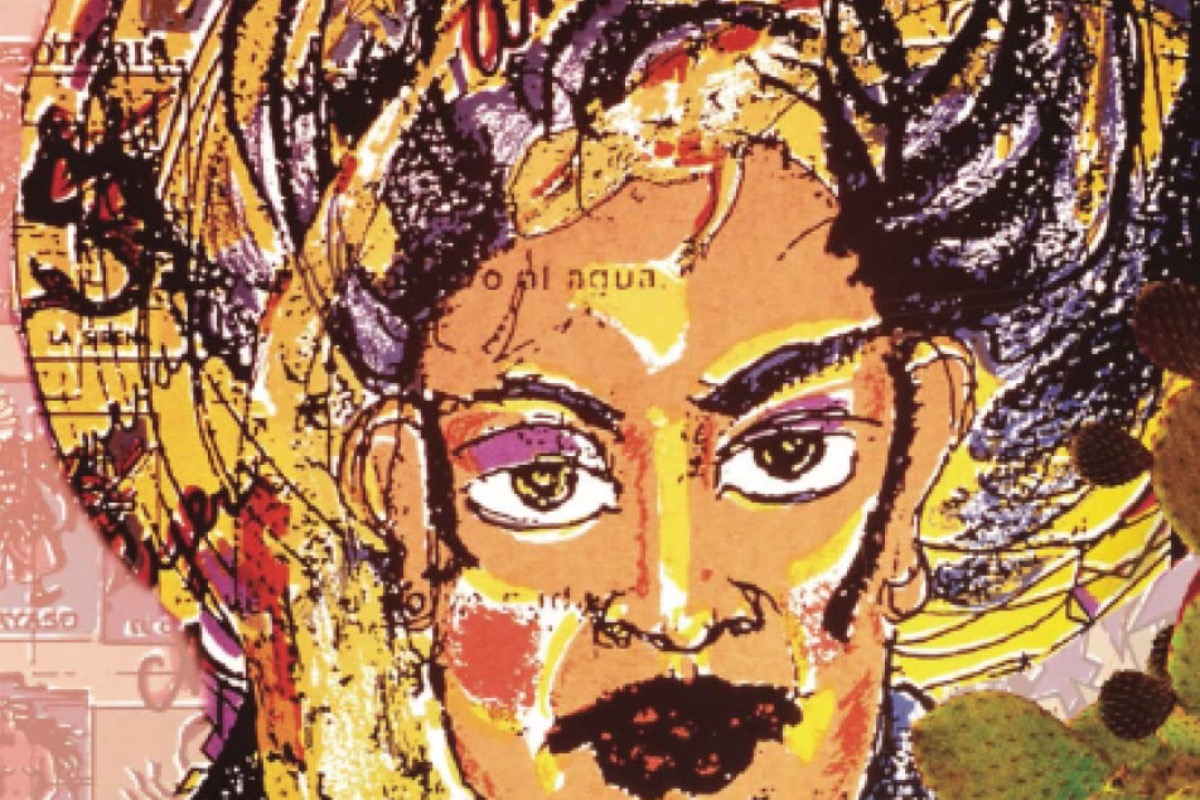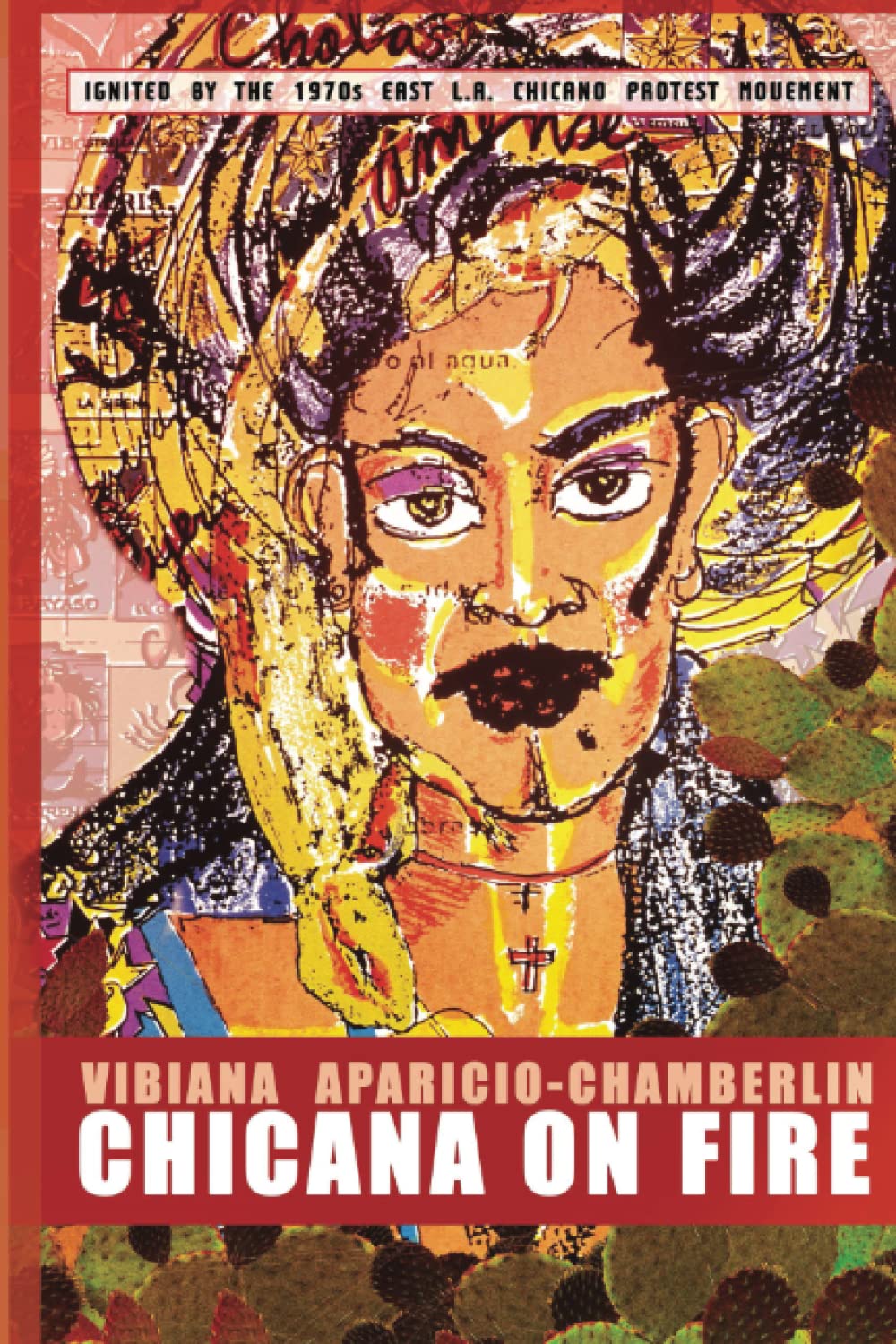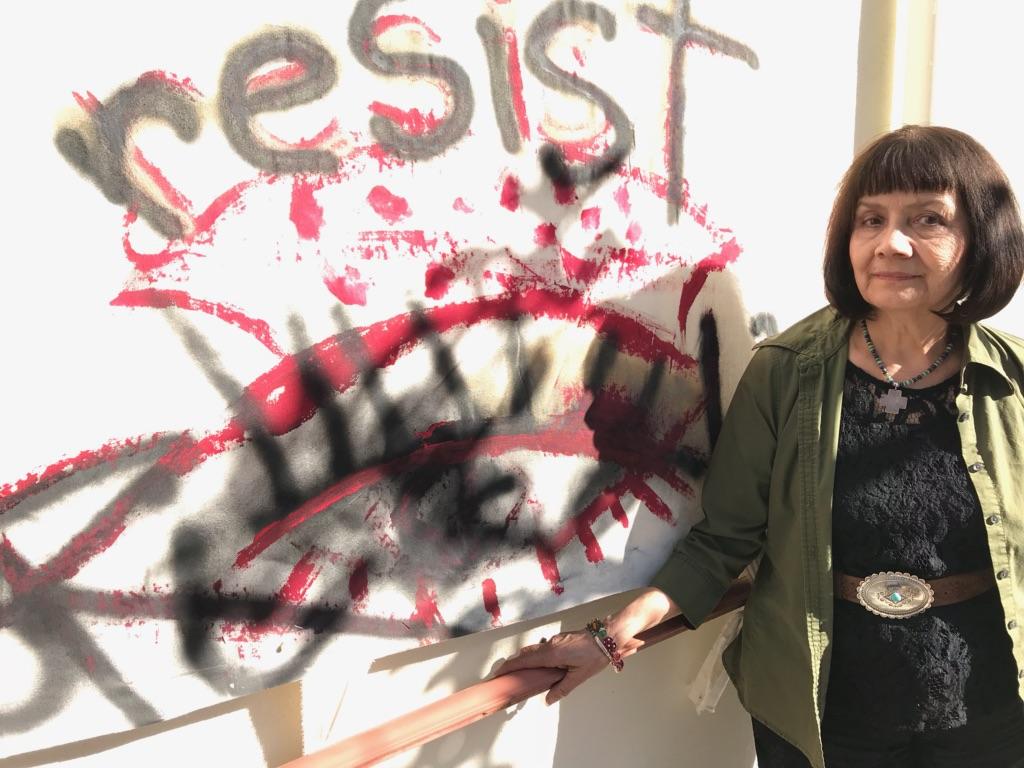

Cover art for ‘Chicana On Fire: Ignited by the 1970’s East L.A. Chicano Protest Movement‘ by Vibiana Aparicio-Chamberlin
LOS ANGELES — Vibiana Aparicio-Chamberlin’s poetry in Chicana On Fire: Ignited by the 1970’s East L.A. Chicano Protest Movement (2022) is a testimonial.
Born and raised in Los Angeles’ Boyle Heights neighborhood, Aparicio-Chamberlin earned a master’s degree in theater arts from California State University, Los Angeles. She is an activist, writer, and visual and performing artist, and has been published in several literary and art magazines.
In her preface to Chicana On Fire, Aparicio-Chamberlin describes her childhood memory as a need to shout out her grievances. “For this I was called a bad mouth, a grosera,” she writes. “By today’s standards I would have been considered a critical thinker.”
Her poetry draws us to the center of her inner glow. To open Aparicio-Chamberlin’s book is to encounter an aroma of wet earth. History and politics are braided into her poems and stories. At times her poetry and storytelling are of volcanic dimensions—eruptive and explosive. In other instances, they are soft swells of maternal loving care dedicated to her family and loved ones.
While centered on the liberation of women, Aparicio-Chamberlin’s feminist consciousness touches on the need to liberate men from their own patriarchal chains. She also draws a clear distinction between white feminists and her Chicana identity. Family, community and her Mexican heritage are all connected through her Indigenous roots and mythology. Her writing is a cactus tree with arched arms full of prickled pear fruit in resistance against droughts of love and the intolerable heat of racism.


Cover art for ‘Chicana On Fire: Ignited by the 1970’s East L.A. Chicano Protest Movement‘ by Vibiana Aparicio-Chamberlin (Amazon)
Aparicio-Chamberlin’s identity and cultural references weave through the book like a huipil. Each page in Chicana On Fire opens up with a grito of reflection or a call for redemption. Unlike academics, who in their attempt to be politically correct describe earth as biosphere, Aparicio-Chamberlin’s oppositional thinking joins the majority of the world’s Indigenous peoples, who refer to earth as Mother Earth, a giver of life.
In verses titled “Cactus Flower,” “Prickly Pear,” “Thorns” and “Nopal,” Aparicio-Chamberlin amplifies her strength with teyolia, the spiritual force that resides in the human heart. An intimate love experience in “Flor y Canto” feels like a heart pricked by a cactus thorn, stinging more with every attempt to remove it:
“With insatiable hunger you stroked my waist.
Now you turn your eyes away from me.”
“Flor y Canto” without a doubt speaks truth: “Every time you refuse tenderness, your heart dies/ Loveless, unrequited.”
In “Don’t Open the Door,” Aparicio-Chamberlin brings us close to the frightful drama of an undocumented family. The poem starts as a letter from a teacher to the mother of Alejandro, warning her to tell her son not to open the door, to be quiet and stay still if he hears a knock. The mother’s consecutive instructions of don’t do this and don’t do that string together like beads on a rosary.
The 1970 police assault on the Chicano peace protest against the Vietnam War at Laguna Park in East Los Angeles sparked Aparicio-Chamberlin’s poetry of protest. Her indignation fired up a series of poems addressing police brutality. In “Attacked, Tear Gassed, and Bludgeoned By Sheriffs at The National Chicano Moratorium Against the War in Vietnam, East Los Angeles, August 29, 1970,” Aparicio-Chamberlin reveals her outrage and determination to never forget the life-changing incident, writing: “I froze; lost my speech. I cried inside my head.” Her invisible tears are fossilized like amber in this poem.
Aparicio-Chamberlin’s poems and stories capture what at times other forms of art cannot: the breath of sound united with words that rhyme out the soul of her experiences. Her verses are a poetic documentation of life.
Kenyan writer and scholar Ngũgĩ wa Thiong’o said that “content is ultimately the arbiter of form,” and the content in Chicana On Fire is a flash of lighting. Like Pablo Neruda’s Canto General, it is a Latin American protest. Aparicio-Chamberlin’s words spawn from her commitment to rescue and preserve memory that allows her community the space to evaluate its circumstances as the authors of their own history.
Palestine, Haiti, Vietnam — all of the Global South — is part of her political poetry. In “Oh, Palestine,” Aparicio-Chamberlin wishes to build a perfumed bridge to be close to her Palestinian sisters in struggle. In her poem dedicated to Haiti, she describes her desire for a small plot of land for the poor: “No more quaking only the Earth stretching and scratching to loosen the soil for beans and corn to grow for you.”
In Aparicio-Chamberlin’s short story “The Bishop’s Ring,” a vendor catches sight of the bishop in front of the Los Angeles Cathedral on Grand and Temple. She rushes across the street and offers the bishop a handmade clay rosary as a gift. The bishop ignores the gift and instead puts out his “manicured hand” with a ring to be kissed by her. She hesitates and lightly touches the bishop’s ring with her lips. He moves away with no blessing and no kind gesture for this hard-working woman.


Poet Vibiana Aparicio-Chamberlin
Aparicio-Chamberlin’s keen sensitivity captures contradictions in the making. Class consciousness is layered in between many of her stories and poems. She is vivid in her description of the vendor and the interactions between those who hold power accompanied with arrogance and those from below, the working class.
Chicana On Fire returns the 1970s’ internationalist solidarity with the Third World back to the reader. Space, place, and geography are continuous references braided together in her work. In “We Didn’t Cross The Border, The Border Crossed Us,” Aparicio-Chamberlin traces the constant overgrowth of a border scar made by U.S imperial ambitions and the oppressive (racist) border measures promoted by former Presidents James Polk, Bill Clinton, George W. Bush, Barack Obama, and Donald Trump towards Mexico and Latin America. In this same poem, Aparicio-Chamberlin reminds the reader of the impact of steel walls with razor ribbons on wildlife, on both sides of the border.
What German philosopher Herbert Marcuse called the “Great Refusal” is the backbone in Chicana On Fire. As Marcuse railed against the acceptance of life as it is without questioning it, Aparicio-Chamberlin refuses the alienating doctrines that justify the exploitation of human beings by other human beings all across the world.
In this series of stories and poems written with fire and courage, Aparicio-Chamberlin brings forth a ballad of cantos dedicated to love and promoting discussion. Chicana On Fire blazes with the ganas to build a different, more promising world for all.
***
Jimmy Centeno is an associate member of the Association of Philosophy and Liberation and the founder of the Latin American Art Research. He is a welder by trade, has taught welding technology at Compton Community College, and is an artist and essayist.



[…] post ‘Chicana On Fire’: Boyle Heights Poet Draws on Chicano Heritage (REVIEW) appeared first on Latino […]